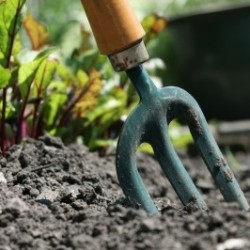
Want a garden but live in a small space? No sweat! Urban organic gardening in containers is a breeze. Once you’ve determined a garden site, it can be easy to freshen up your abode by choosing appropriate crops, containers, soil and educating yourself on watering and fertilizer requirements.
Shallow-rooted, bushy and dwarf varieties provide the highest yield-radishes, spinach, cherry tomatoes, beets, lettuce, herbs to name a few. If you want vine, add your stake or trellis when planting so you don’t disrupt the root system further down the line.
One of the most important things to remember when determining your container is good drainage. Placing small to medium rocks at the bottom will help as long as they are not large enough to plug drain holes. If you’ve got some containers without holes, go ahead and drill some. To maximize growing space, bigger is usually better. Take weight and material into consideration. For example, in certain weather conditions, will you move inside and outside? Metal and dark colors may look cool, but may be temperature hot. Clay may pull water out of your soil, so it’s wise to soak these in water before filling.
Potting soil holds water and roots of the plant and holds it upright. Invest in something with good drainage and both large and small pieces. Gardenville and Thunderhead are good potting soils. Potting soil with compost contains microbes to break down organic matter to hold nutrients.
Plants need additional nutrients that potting soil just won’t provide. There exists a range of both liquid and dry potting soils. Potassium feeds roots. Phosphorus makes flowers and fruit. Nitrogen produces leaves. Boron, iron, and many other micronutrients contribute to cell walls and chlorophyll.
Stop by and say hi to some local resources like Austin Organic Gardeners, The Natural Gardener, Geo Growers, The Great Outdoors, Barton Springs Nursery and Shoal Creek Nursery.
by Beth Brozowsky, BA, CN, CPC, CYT
